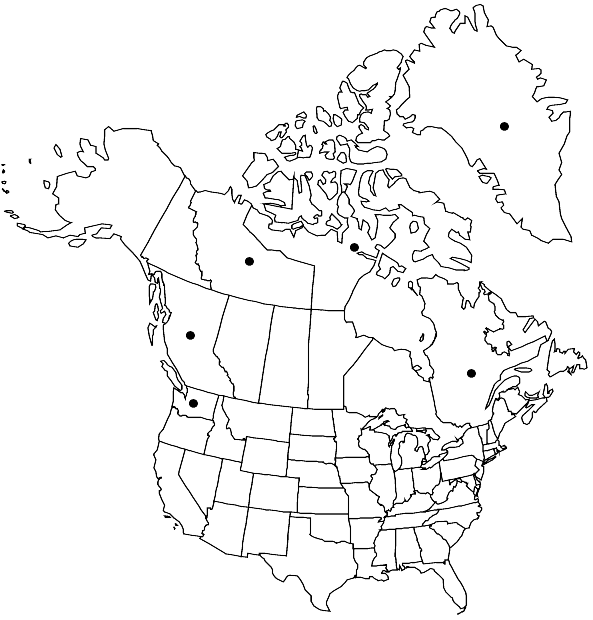Schistidium venetum
Bryophyt. Biblioth. 49: 192, fig. 76. 1996,.
Plants in small or sometimes extensive tufts, olivaceous, often with a yellowish or brownish tinge. Stems 1–3.8 cm, central strand distinct. Leaves erect or curved, usually imbricate, ovatelanceolate to ovate-triangular, broadly keeled distally, 1.2–1.7 (–2) mm, 1-stratose with 2-stratose patches or evenly 2-stratose distally; margins recurved to near apex, smooth, usually 2-stratose, occasionally multistratose; apices acute or blunt; costa subpercurrent or excurrent as a lightly denticulate, usually broad-based, and flexuose awn that often embraces a portion of the leaf apex, smooth; basal marginal cells quadrate or short-rectangular; distal laminal cells ovate or short-rectangular, 6–10 µm wide, sinuose, trigonous. Sexual condition autoicous. Capsule red or orangebrown, short-cylindric, 0.8–1.1 (–1.3) mm; exothecial cells mostly elongate, mixed with isodiametric and a few oblate cells, thin-walled, sometimes trigonous; stomata present; peristome patent to recurved, sometimes twisted, 270–440 µm, bright red or orange, densely papillose, strongly perforated with uneven margins. Spores 8–12 µm, granulose or nearly smooth.
Phenology: Capsules mature late spring to early summer.
Habitat: Wet ground of arctic fens, tundra, and drainage channels
Elevation: low elevations (0-100 m)
Distribution

Greenland, B.C., N.W.T., Nunavut, Que., Wash., Europe
Discussion
Schistidium venetum is a distinctive, rather small species characterized by patchy or completely 2-stratose distal laminae, a lightly denticulate and usually broad-based awn that frequently embraces the upper portions of the lamina, and strongly perforated, uneven-sided peristome teeth.
Selected References
None.
Lower Taxa
"um" is not declared as a valid unit of measurement for this property.